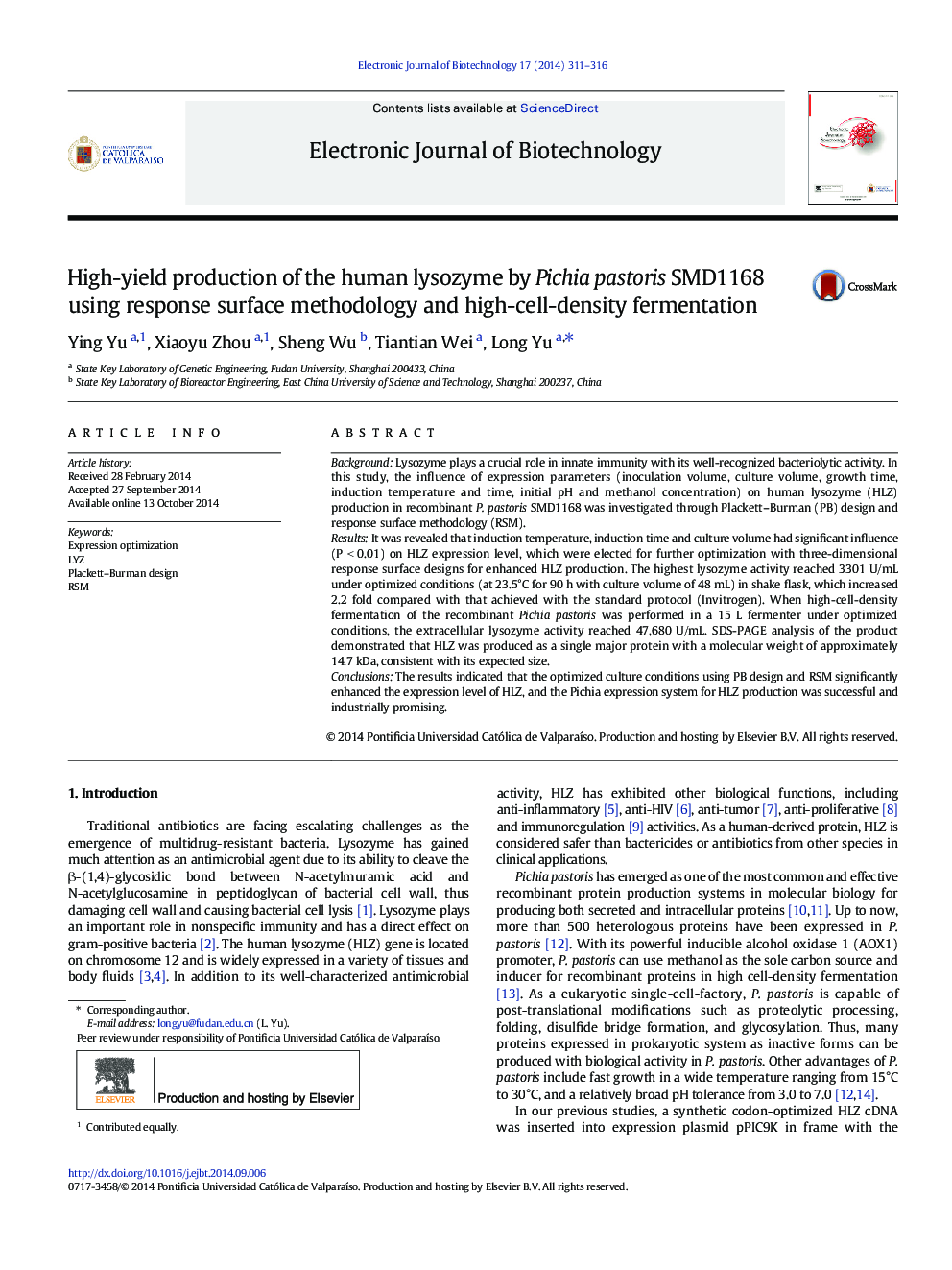| Article ID | Journal | Published Year | Pages | File Type |
|---|---|---|---|---|
| 200569 | Electronic Journal of Biotechnology | 2014 | 6 Pages |
BackgroundLysozyme plays a crucial role in innate immunity with its well-recognized bacteriolytic activity. In this study, the influence of expression parameters (inoculation volume, culture volume, growth time, induction temperature and time, initial pH and methanol concentration) on human lysozyme (HLZ) production in recombinant P. pastoris SMD1168 was investigated through Plackett–Burman (PB) design and response surface methodology (RSM).ResultsIt was revealed that induction temperature, induction time and culture volume had significant influence (P < 0.01) on HLZ expression level, which were elected for further optimization with three-dimensional response surface designs for enhanced HLZ production. The highest lysozyme activity reached 3301 U/mL under optimized conditions (at 23.5°C for 90 h with culture volume of 48 mL) in shake flask, which increased 2.2 fold compared with that achieved with the standard protocol (Invitrogen). When high-cell-density fermentation of the recombinant Pichia pastoris was performed in a 15 L fermenter under optimized conditions, the extracellular lysozyme activity reached 47,680 U/mL. SDS-PAGE analysis of the product demonstrated that HLZ was produced as a single major protein with a molecular weight of approximately 14.7 kDa, consistent with its expected size.ConclusionsThe results indicated that the optimized culture conditions using PB design and RSM significantly enhanced the expression level of HLZ, and the Pichia expression system for HLZ production was successful and industrially promising.
